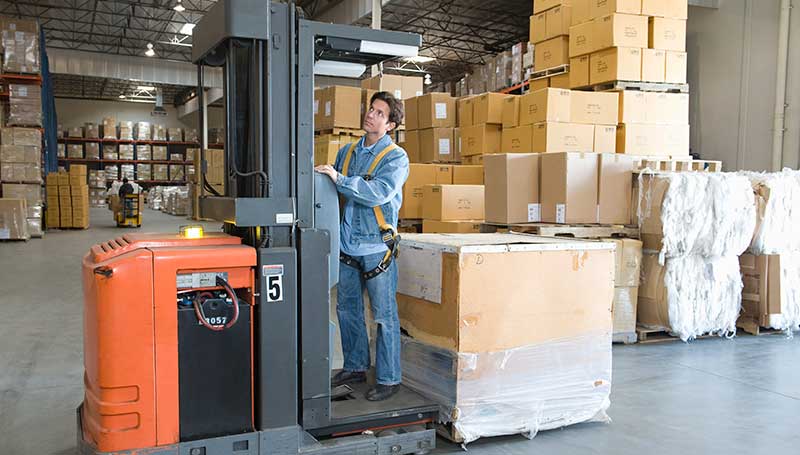Full Container Load (FCL) vs. Less than Container Load (LCL) shipping is a widespread freight mode during cargo importing and exporting. This page will clarify the difference between LCL and FCL to help you determine which better suit for your business.
What is LCL shipment?
LCL shipping, the same handle as LTL shipping, is always used when your goods do not fill an entire container. In order to occupy the whole container, the carrier will combine with several shippers’ shipments and transport them within one.
What is FCL in shipping?
In contrast with the LCL shipping way, FCL describes your cargo should use an entire container to start international transit. That means your shipment is large enough to fill a whole container. It works the same as the FTL freight in trucking shipping.
What is the difference between LCL and FCL?
Below are LCL and FCL some fundamental distinguish:
Shipment volume
The main difference between LCL and FCL is the amount of cargo shipping. LCL freight shipping is generally used for small cargo shipments, while FCL freight shipping is used for large goods shipping.
For smaller shipments of 5 to 15 CBM, LCL shipping is usually the better option. FCL shipments tend to be cheaper when the cargo takes up more than 15 CBM.

Delivery time
Since LCL shipping requires consolidation and deconsolidation with other shipments, LCL may take more time to reach the destination than FCL freight. Specifically, the shipping agent needs to group, sort, and load many shipments into one container when shipping LCL freight.
Furthermore, if one batch of the LCL shipment has any issues during customs clearance, it may affect other shippers’ cargo delivery. But FCL shipping doesn’t need to be loaded and unloaded with other shippers’ cargo, so their delivery time is usually faster than LCL.
Risk for shipping
LCL freight faces a higher risk of damage and loss than FCL freight due to the many types of goods packed in one container. With LCL shipping, you can not choose where to put your own cargo in the container. It can cause harm to your goods in transit when packed together with other sensitive or special shipments such as liquid, heavy or smelly goods.
As the handling process of LCL shipment is more complex than FCL shipping, it will carry a particular risk of loss and damage to the goods. For this result, it is also worth opting for FCL shipping for smaller but highly sensitive cargo.
Shipping Charge
LCL shipments are consolidated with other shipper shipments to fill a container. So the shipping freight will share among the shippers whose goods are shipping in the same container. Typically, the shipping company charges the shipper based on the volume or weight of goods during LCL shipping. It means you only pay for the space you have taken.
By contrast, the FCL shipping charge is a flat rate calculated by an entire container, regardless of the volume or weight of the shipping goods. But please note that total cargo can not exceed the maximum capacity of the container. You can keep reading to learn how to calculate the FCL and LCL shipping charge.
How to calculate demurrage?
LCL charge:
Shipping LCL usually adopts the “W/M” (stands for weight or measurement) method. First, you should gain the volume(CBM/Cubic Meter) or gross weight(RT/Revenue Tons) of your goods. And then calculate the LCL charge based on the higher value between CBM and RT.
Second, you can get the LCL freight rate from a freight forwarding company like Airsupply. And calculate the LCL charge by multiplying the volume or weight of the cargo by the LCL shipping rate.
FCL Charges:
Distinct by LCL, you should determine the size(CBM) and type of container needed before starting FCL freight shipping. Typically, according to the volume, it has 20 feet and 40 feet FCL containers, etc. While based on the class of your cargo, the FCL shipping container is classified as dry, general purpose, high cube, refrigerated features, and more. For more details, you can contact ASL official team for help.
Finally, require the FCL rate from a shipping agent and calculate the FCL charge by multiplying the shipping rate by the number of containers you have used.
It is significant to obtain up-to-date shipping rates and get the correct size of your goods, whether you use FCL or LCL. In this way, you can ensure to have an accurate shipping charge to a great extent.
Which factors consider for selecting FCL vs. LCL?
Choosing between FCL and LCL freight shipping depends on several factors. Here are what it boils down to consider:
Shipment size
If your cargo volume is less than 15 CBM down to 1 CBM, LCL is a better option for your business. The FCL freight shipping is available for any shipment, regardless of size. Generally, a 20′ container can usually hold about ten or 20 standard pallets if you can put a second layer on top of the first.
Typically, the approximate capacity of one 20′ container is 33CBM. And the maximum weight per CBM is 1,000kg. If the weight of your cargo exceeds the allowable load capacity, the billable weight will be calculated as gross weight. For instance, 1CBM load weighs 1,200kg, the chargeable weight will be 1.2CBM instead of 1CBM.
Shipping cost
The cost of shipping will vary depending on the type of cargo size. If your cargo shipping is over 15CBM a little, it is better to check the FCL freight and compare it with LCL to choose the favorable one. Because shipping LCL freight has more handling charges involving warehousing, LCL consol fee, and more which will vary from a different country.
The urgency of delivery
LCL shipment will take more time than FCL as it requests additional days for integrating and sorting the cargo for other shippers. So if you want to arrive at the destination faster, it is no doubt to work with the FCL shipping option.
Security
Shipping FCL can provide more security for high-value goods, as the entire container is used exclusively for your cargo. On the other hand, LCL freight shipping is consolidated with other shippers’ goods. So there is a higher risk of damage, loss, or theft. When shipping LCL, you can buy cargo insurance to protect your shipment.
Freight forwarder expertise
Finding a professional freight forwarder is critical whether you need FCL or LCL shipping. A knowledgeable freight forwarder can support determining the best shipping option for your shipment. You can contact and examine whether the freight agent is proficient in LCL and FCL freight to ensure smooth international shipping.
You should carefully consider the above point before shipping your cargo. To guarantee your shipment, Airsupply is here to help you. It offers live LCL vs. FCL rates and has expert custom clearance.
Why choose ASL for FCL and LCL freight?
Airsupply Logistics is a freight forwarding company that can connect importers and exporters hassle-free. It serves millions of shippers and carriers from North America, the Middle East, Europe, and other countries.
If you want to ship your cargo with LCL or FCL shipping, you can go with the Airsuppply freight solution. It will process all shipping procedures based on your available transporting methods and incoterm. With ASL’s one-stop freight shipping support, you can get timeliness and flexibility for your shipment. It is also great for small businesses to start global trade. Come and get a free quote!




